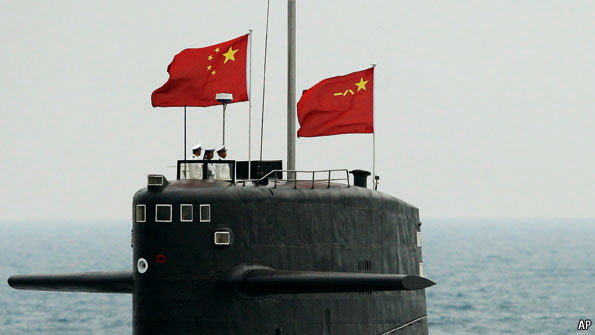Special to WorldTribune , December 6, 2017
By Miles Maochun Yu, Hoover Institution
Last week marks the 63rd anniversary of the signing of the Mutual Defense Treaty between the United States of America and the Republic of China. The historic mutual defense treaty, signed on Dec. 2, 1954 in Washington, provided an ironclad guarantee to keep Taiwan from being invaded by the People’s Republic of China between 1955 and 1979.
Since President Jimmy Carter unilaterally terminated the vital treaty on Jan. 1, 1979, Taiwan has been subjected to constant threats of invasion by the communist government in Beijing, as the subsequent Taiwan Relations Act does not guarantee direct military assistance to Taiwan if China invades the island democracy.
 The signing and demise of the mutual defense treaty with Taiwan illustrates the urgent imperative to change America’s approach to defense alliances in today’s Asia: the U.S. does not have a multilateral alliance in Asia, as is the case with NATO in Europe. Instead, America’s approach in Asia is based upon bilateral mutual defense treaties with separate allies, such as Japan, South Korea, and the Philippines.
The signing and demise of the mutual defense treaty with Taiwan illustrates the urgent imperative to change America’s approach to defense alliances in today’s Asia: the U.S. does not have a multilateral alliance in Asia, as is the case with NATO in Europe. Instead, America’s approach in Asia is based upon bilateral mutual defense treaties with separate allies, such as Japan, South Korea, and the Philippines.
This has to change, since conditions for bilateral alliances in Asia no longer exist, and the impetuses for a grand multilateral mutual defense system, led by the United States, have become urgent and overwhelmingly imposing.
The two basic reasons for a bilateral treaty system in Asia, both valid in the 1950s when various bilateral treaties were signed, are as follows:
- First, unlike Europe, Asian countries did not have a more or less uniform political system, as these countries ranged from being democratic to authoritarian, so there was not a large enough common base of political values upon which to build a multilateral defense alliance.
- Second, unlike NATO member states that all faced a common threat from the Soviet Union, there was not a common enemy facing various Asian allies at the time.
In today’s Asia, these two conditions for a bilateral alliance system no longer exist.
The wave of Asian democratization since the mid-1980s has produced a much broader framework of common values, as most of the former allies of the U.S. that were simultaneously authoritarian, such as the Republic of China in Taiwan, and South Korea, have become vibrant democracies. There are enough democratic nations in Asia that can form a multilateral, NATO-like mutual defense alliance that could include Japan, South Korea, India, Taiwan, Australia, New Zealand, and most of the ASEAN nations.
But more importantly, a common threat, China, has emerged with a vengeance to provide the most persuasive argument for a values-based multilateral mutual defense alliance. In other words, China is as much a common threat to Asian nations today as the Soviet Union was to Europe before 1991.
A multilateral defense alliance led by a democratic superpower with unmatched military prowess will provide a common framework for member states to heal lingering, sometimes trivial, wounds of mutual distrust, as is the case between Japan and South Korea; to force less democratic allies within this new alliance to catch up on democratization, the same way NATO did to affect the politics of the less democratic Spain, Portugal, and Turkey; to greatly reduce the defense burden of the United States as newly developed economic Asian power houses will be willing to share the cost for common defense; to obviate China’s effort to play one nation against the other to undermine America’s leadership in the region, as Beijing has done to Seoul in an effort to isolate Tokyo and Washington; but most importantly, to create a much stronger deterrence against China’s aggression for the long-term peace, stability, and hope for democracy in Asia and beyond.
The time has come for the United States to abandon the obsolete bilateral approach and adopt a multilateral approach to form a values-based, grand mutual defense alliance in Asia in order to face a common threat.
Miles Maochun Yu is professor of East Asia and military and naval history at the United States Naval Academy and a contributing editor at Geostrategy-Direct.com.
